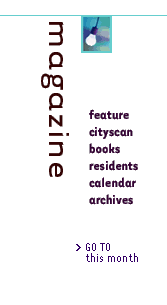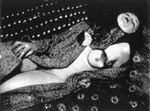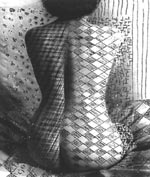The current Brassaï/Picasso show is a good reason to revisit the Musée Picasso. This thematic
exhibition explores Picasso’s relationship with photography and
his many years of work with Brassaï. The museum’s recent acquisitions,
in all over 440 items, represent the earliest known photos of
Picasso’s sculptures by Brassaï, as well as an impressive body
of photographic experiments produced by both artists using the
glass plate technique.
Brassaï met Pablo Picasso in 1932 when he was commissioned to
take a series of pictures highlighting the artist’s studio as well as some plaster sculptures done at Boisgeloup for the
review Minotaure. Several years later he was again contacted to
photograph Picasso’s work for the first book published on the
subject of the artist’s sculptures by the French publisher Editions
du Chêne. Hence, between 1932 and 1946 Brassaï photographed all of his sculpted œuvre. This long-term working relationship led to yet another published
exchange between the two artists on the respective nature of photography
and sculpture. This famous dialogue between two modern masters,
“Conversations with Picasso,” was later published by Brassaï in
1964.
The exhibit displays nearly150 unpublished photographs from this
period of Picasso’s work in plaster, wood, bronze or torn paper.
But most important, we are shown Brassaï’s notes and visual strategies
for this major project. His various viewpoints, framing and lighting
methods become apparent. It is easy to imagine the photographer
walking around his still subjects in search of the appropriate
angle, to “coax” each piece to life. These collective images could
be interpreted as Brassaï’s “manifesto” on the art of photographing sculpture. Picasso, himself, was
so impressed by the camera’s capacity to reveal diverse aspects
of a work through the dramatic effects of light and shadow that
he once confided to Brassaï “it’s through your photographs that
I can judge my sculptures. Through them, I see my work with fresh
eyes...”
One evening in December 1932, while working on a series of photographs
of Picasso’s rue La Boétie studio, Brassaï left a small glass photographic plate behind. Picasso found it and decided to etch a portrait of Marie-Thérèse
Walter on it. Was he aware of the many works produced by Corot
and even Delacroix using a similar technique? In any case, the
unlimited possibilities of drawing on a photographic plate attracted
Brassaï as well, and this incident marked the beginning of many
experiments in this medium for both artists.
It was a turning point for Brassaï, who later wrote to Picasso:
“It was you who aroused the demon of drawing in me.” In turn, the decision to print photographic proofs from a glass
plate was to spark Picasso’s collaboration with Dora Maar, a few
years later. The show includes four large glass plate portraits
of Dora Maar painted in oil, from which he printed some 20 proofs,
superposing paper cut-outs, pieces of fabric and diverse objects
over the glass plates. Following the recent Dora Maar bequest,
all these pieces have been added to the museum’s permanent collection;
and with the exception of four prints published in Cahier d’art
in 1937, are on public view for the first time.
Brassaï combined the expressions of photography, engraving and
drawing by tracing geometric motifs onto negatives of nude studies.
During the early 1930s Brassaï produced over 150 works that he termed “scratchings.” In his book “Transmutations,” he wrote of these experimental
pieces saying: “Photography sometimes vanished into thin air.
In places a few scraps survived; a trembling nipple, a foreshortened
face, a thigh, an arm.”
Conversations between Brassaï and Picasso, as well as their experiments
in photography, are clearly documented in this fine show which
also uncovers unknown aspects of each artist’s work.
“Brassaï/Picasso: Conversations avec la lumière,” to May 1, 9:30am
to 6pm, closed Tue, Musée Picasso, 5, rue de Thorigny, 3e, tel:
01.42.71.25.21, M° St-Paul, 38F.





